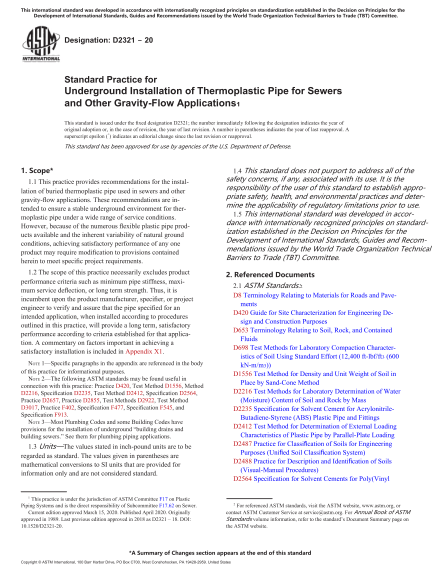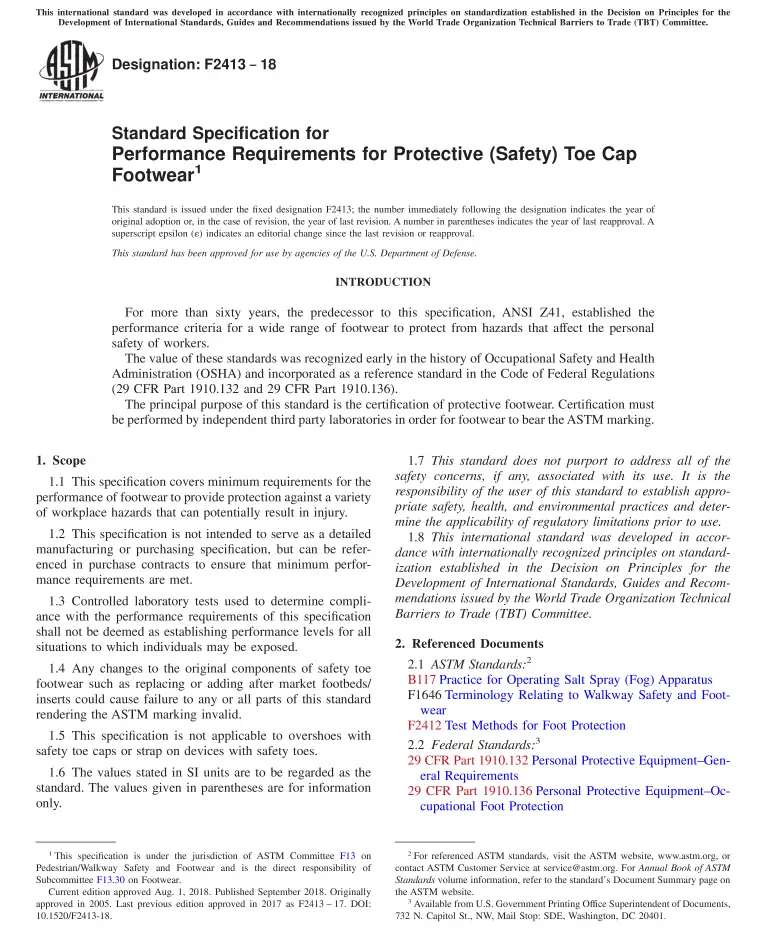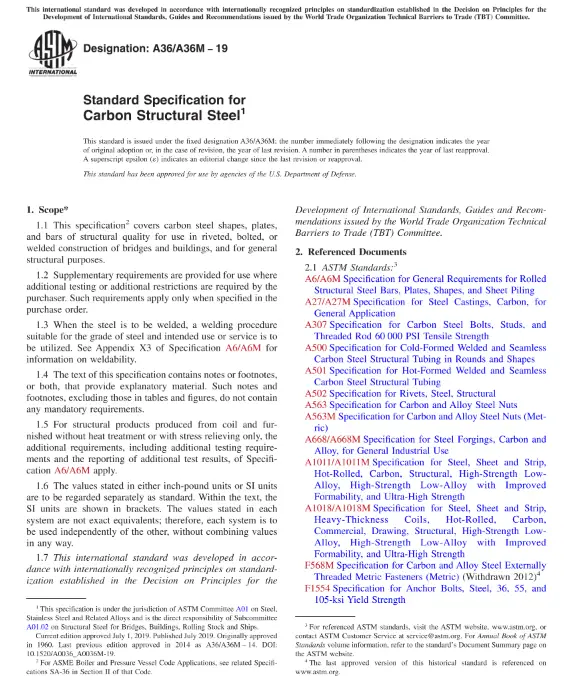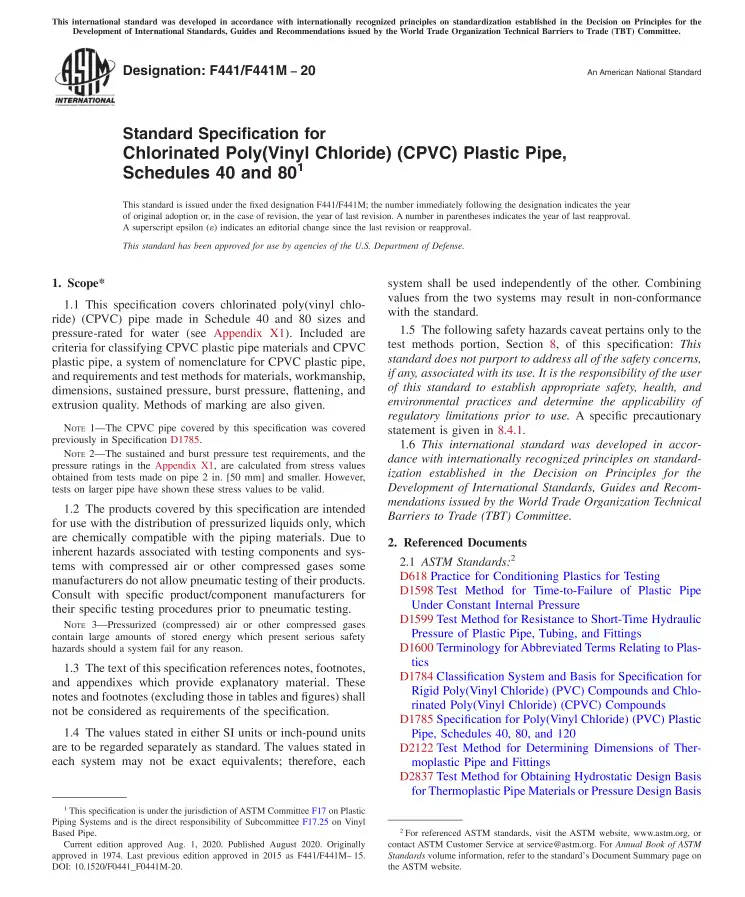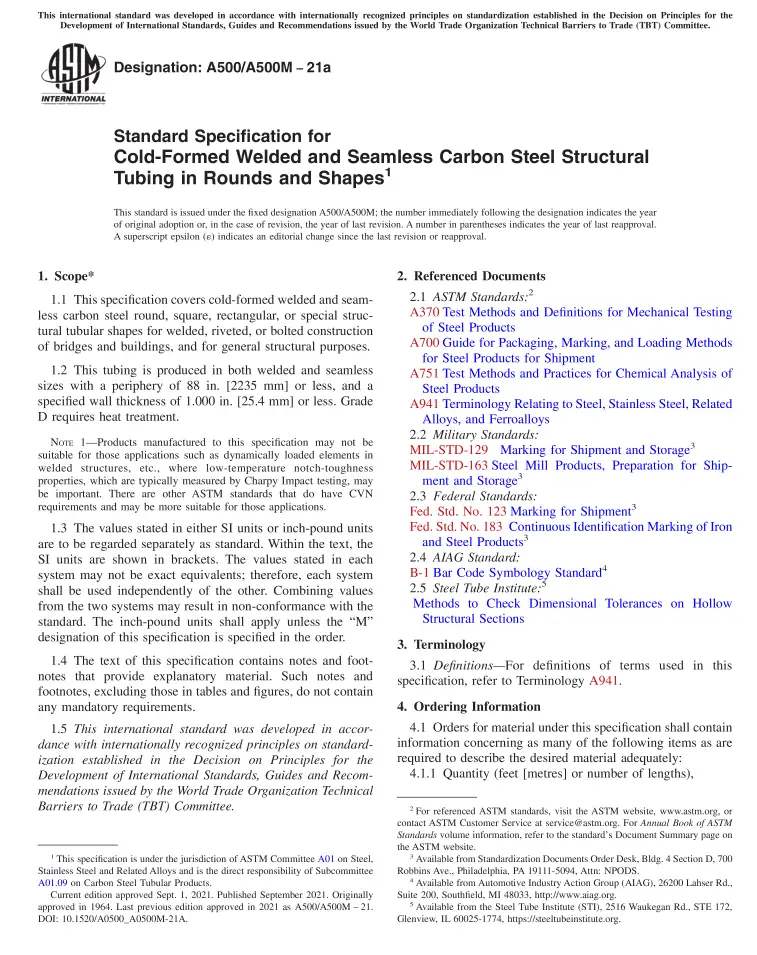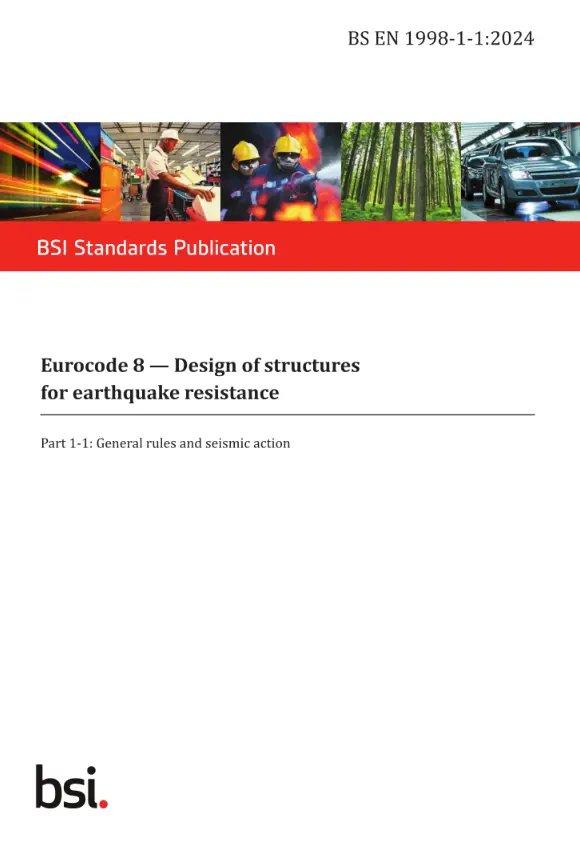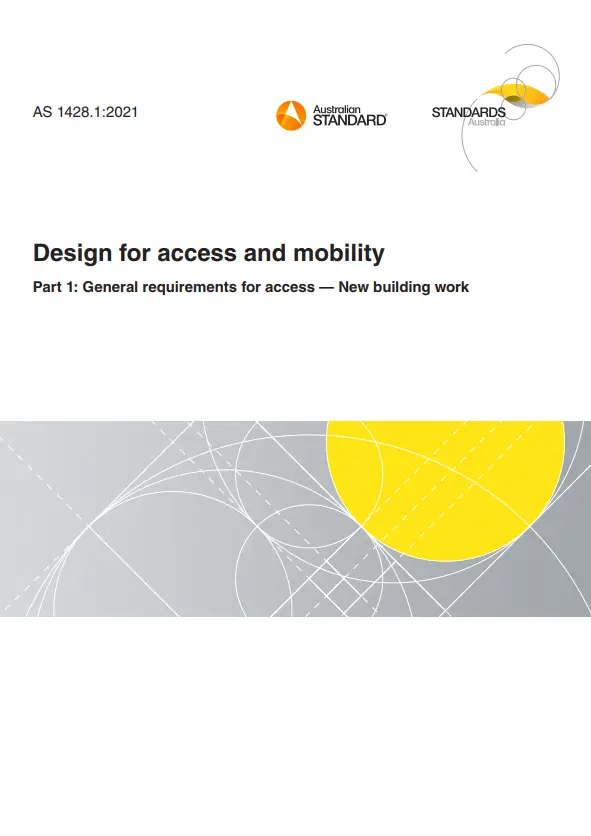ASTM D2321, 2020 Edition – Standard Practice for Underground Installation of Thermoplastic Pipe for Sewers and Other Gravity-Flow Applications
ASTM D2321 practice provides recommendations for the installation of buried thermoplastic pipe used in sewers and other gravity-flow applications. These recommendations are intended to ensure a stable underground environment for thermoplastic pipe under a wide range of service conditions. However, because of the numerous flexible plastic pipe products available and the inherent variability of natural ground conditions, achieving satisfactory performance of any one product may require modification to provisions contained herein to meet specific project requirements.
The scope of this practice necessarily excludes product performance criteria such as minimum pipe stiffness, maximum service deflection, or long term strength. Thus, it is incumbent upon the product manufacturer, specifier, or project engineer to verify and assure that the pipe specified for an intended application, when installed according to procedures outlined in this practice, will provide a long term, satisfactory performance according to criteria established for that application. A commentary on factors important in achieving a satisfactory installation is included in Appendix X1.
NOTE 1—Specific paragraphs in the appendix are referenced in the body of this practice for informational purposes.
NOTE 2—The following ASTM standards may be found useful in connection with this practice: Practice D420, Test Method D1556, Method D2216, Specification D2235, Test Method D2412, Specification D2564, Practice D2657, Practice D2855, Test Methods D2922, Test Method D3017, Practice F402, Specification F477, Specification F545, and Specification F913.
NOTE 3—Most Plumbing Codes and some Building Codes have provisions for the installation of underground “building drains and building sewers.” See them for plumbing piping applications.
Units—The values stated in inch-pound units are to be regarded as standard. The values given in parentheses are mathematical conversions to SI units that are provided for information only and are not considered standard.
This standard does not purport to address all of the safety concerns, if any, associated with its use. It is the responsibility of the user of this standard to establish appropriate safety, health, and environmental practices and determine the applicability of regulatory limitations prior to use.
This international standard was developed in accordance with internationally recognized principles on standardization established in the Decision on Principles for the Development of International Standards, Guides and Recommendations issued by the World Trade Organization Technical Barriers to Trade (TBT) Committee.
General Product Information:
| Revision | 2020 Edition |
| Document Type | |
| Document Language | English |
| Pages | 12 |
| Publisher | ASTM International (ASTM) |
| Status | Current |

